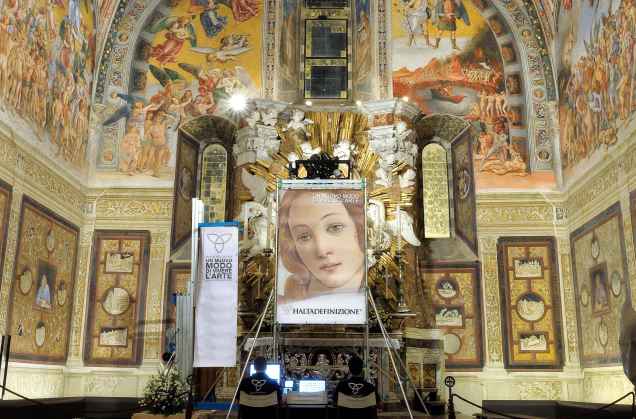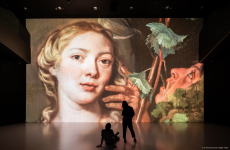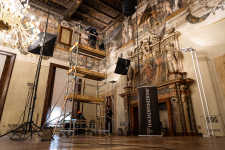Haltadefinizione has expanded its free online catalog of immersive experiences. Now, with a new online 360-degree viewer, art lovers can explore the details of the frescoes of Luca Signorelli in the Cathedral of Orvieto.
The Gigapixel image of the entire painted surface of the Chapel of San Brizio required a total of about 10,000 ultra-high definition digital photographs to produce. Using the interactive viewer, scholars and art lovers can enter the Chapel virtually and select a fresco to observe close-up, in ultra-high definition.
Luca Signorelli painted the frescoes in the Chapel of San Brizio in the Cathedral of Orvieto between 1499 and 1502. They display a firm mastery of design and the artist’s extraordinary ability to depict the human body. Signorelli’s dynamic and vigorous figures come to life in ultra-high definition images that display anatomical detail with incredible clarity.

Detail of the fresco depicting the Resurrection of the Flesh
Advanced digitization techniques allow the user to enlarge images without losing resolution. This makes it possible to zoom in on the works and reveal details that are not visible to the naked eye, due to the vast size of the chapel. Not to be missed, in particular, is the fresco of the Last Judgment, one of the most famous works by Signorelli and one of the most dramatic representations of the theme in the Renaissance.

Detail of the fresco depicting the Last Judgement
The fruitful collaboration between the Orvieto Cathedral and Haltadefinizione has made possible the publication of these ultra-high definition images. 2023 marks the 500th anniversary of the death of Luca Signorelli and this project is an important development in enhanced use of Signorelli’s frescoes.
This offers a very exciting viewing experience that realizes the potential of digital technology. Ultra-high definition digital photography, combined with immersive viewing software, allows the viewer to see details that are otherwise inaccessible.

Detail of the fresco depicting The Elect Being Called to Paradise
With Haltadefinizione’s Image Bank, you can take a deep dive into the Chapel of San Brizio and analyze each scene of the fresco cycle. The Haltadefinizione site already contains a 360-degree viewer of Padua’s Scrovegni Chapel. Now visitors can explore another cycle of frescoes in the same way. This is how we can continue to broaden the distribution of the cultural heritage with new experiences that promote public access to the works of the great masters.




